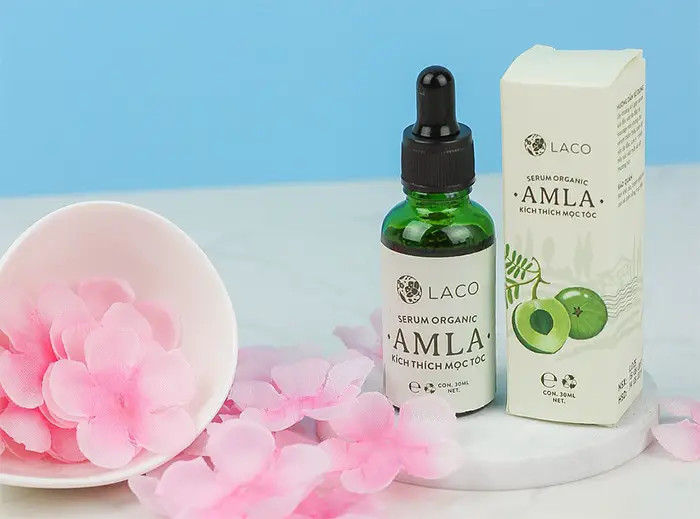Amla oil, derived from the Indian gooseberry, offers a natural solution for those dealing with hair loss and the unwelcome arrival of grey hair. With its rich antioxidant properties, it works wonders in strengthening hair. Found in products like Dabur amla hair oil, it’s known for nourishing and fortifying hair.
In this guide, we’ll show you how amla oil can be your secret weapon for restoring your hair’s health and color, offering a straightforward approach to using its benefits.
Table of Contents
- What is Amla Oil?
- Benefits of Amla Oil for Grey Hair
- How to Use Amla Oil to Treat Grey Hair
- Choosing the Best Amla Oil: A Buyer’s Guide
- FAQs
What is Amla Oil?
Amla oil, from the nutrient-rich seeds of the Indian gooseberry, is traditionally used in Indian medicine and offers a unique method of extraction. Unlike cold-pressed oils, amla oil is produced by soaking amla seeds or powder in a base oil (such as coconut, sesame, or mineral oil) allowing the amla’s nutrients to infuse the oil.
This method is beneficial for hair, as demonstrated in a study that found amla oil, especially when mixed with myrtle extract and sesame oil, to be effective in treating hair loss. The oil’s high phenolic content is key to strengthening hair, encouraging growth, and preventing premature greying, showing promise despite limited research.

Benefits of Amla Oil for Grey Hair
As we age, it’s natural for hair to turn grey due to a decrease in pigment production by hair follicles. Premature greying can happen for various reasons, including genetics, stress, and lifestyle choices. Amla oil comes into play as a natural remedy for those encountering early signs of greying, providing a traditional approach to hair care.
Applying this natural oil will have the following benefits for grey hair:
Protecting Hair from Environmental Stress
Amla oil, rich in vitamin C, is a natural protector against premature greying. The environmental pollution we face exposes our hair to free radicals, which can disrupt melanin production in the scalp, leading to grey strands and hair loss. Amla oil’s powerful antioxidant properties help maintain the natural pigment in your hair, ensuring it stays vibrant and healthy.
Boosting Hair Vitality
Grey hair can often look dull and thin, contributing to an aged appearance. Amla oil, when used as a hair tonic, targets this issue by fortifying hair from the roots to the tips. It not only adds shine and volume but also promotes thickness.
The key ingredient, tannins found in amla oil, play a dual role: they shield hair from environmental damage and heat, and encourage healthier growth, offering a comprehensive solution for revitalizing grey hair.
Hydrating and Nourishing Grey Hair
Amla oil is great for bringing life back to dull grey hair by adding moisture. It goes beyond just making hair look good; it deeply feeds the scalp too, without blocking any pores. This means your hair gets the hydration and nutrients it needs without any heaviness or greasiness. Plus, amla oil makes hair softer and easier to manage by providing essential fatty acids.
Soothing Scalp Inflammation
Research suggests that stress and illness can cause premature greying by affecting genes linked to hair color and inflammation. Amla oil, with its anti-inflammatory properties, may combat this by calming scalp inflammation. This action can help in preventing hair from turning grey too soon, offering a natural way to maintain your hair’s natural color longer.
How to Use Amla Oil to Treat Grey Hair
To use amla oil for grey hair, mix it with other beneficial oils for varied hair treatments. Both amla oil and amla powder can be used to treat grey hair.
Amla powder can be used as a natural shampoo, offering a way to cleanse the hair and strengthen hair strands. Additionally, it can act as a natural hair dye when combined with ayurvedic herbs like henna, black tea leaves, and fenugreek seeds to darken grey hair.
Below are the ways this oil can be applied to help treat grey hair.
Enhancing Hair Health with Amla and Coconut Oil
Mixing amla with coconut oil is great for grey hair, providing deep moisture and making hair soft. Coconut oil’s fatty acids, alongside amla oil, enhance hair health by moisturizing, conditioning, and adding shine.
This combination also boosts scalp health with its antibacterial and antifungal properties, improves circulation, and promotes healing. Together, they offer a nourishing treatment that revitalizes hair without heaviness.
How to use amla and coconut oil together: For a balanced treatment, mix equal parts of amla oil and coconut oil, adjusting the quantity based on hair length and thickness. Applying this blend overnight can enhance its benefits, as the prolonged exposure allows for deeper nourishment. However, since the oils can make hair greasy, it’s advisable to wash your hair with shampoo afterward to remove excess oil, leaving your hair nourished but not heavy.
Nourishing Grey Hair with Mustard and Amla Oil
Mustard oil, known for its deep conditioning, antibacterial, antifungal, and anti-inflammatory properties, works wonders for hair health and growth. Paired with amla oil, it creates a potent mix that nourishes the hair and keeps premature greying at bay by enhancing scalp circulation.
How to Use Mustard and Amla Oil Together:
- Mix 1 cup of mustard oil with ¼ cup of amla oil and add some curry leaves to a pan.
- Simmer for 10 minutes, let it cool, then strain.
- Apply evenly to the scalp and leave for 2 hours.
- For best results, repeat every two weeks.
This blend offers a holistic approach to maintaining healthy, naturally colored hair.
Revitalize Grey Hair with Dabur Amla Hair Oil
Dabur Amla Hair Oil stands out for its quality and effectiveness in combating premature greying, nourishing the scalp, and strengthening hair. For an enhanced hot oil treatment:
- Warm some Dabur amla oil with a teaspoon of honey.
- Apply lukewarm oil to sectioned hair, massaging into the scalp. Do this for 10 minutes.
- Wrap hair in a hot towel to enhance penetration.
- After allowing it to sit, wash it out with shampoo within 24 hours for revitalized hair.
Choosing the Best Amla Oil: A Buyer’s Guide
When selecting amla oil, ensuring its quality and safety is crucial:
- Verify INCI Listing: High-quality amla oil should list ‘Phyllanthus emblica’ as its INCI or scientific name on the ingredient list, alongside the country of origin.
- Organic Certification: Look for oils certified organic and marked ‘100% pure’, indicating no harmful additives.
- Color Consistency: While color variations depend on the base oil, a mismatch from the stated color on the manufacturer’s website could be a red flag.
FAQs
Does amla oil darken hair?
Yes, amla oil and powder can gradually darken hair over time by encouraging melanin production in the scalp, enhancing hair’s natural color.
Does amla oil reverse grey hair?
Amla oil may help reverse the appearance of grey hair by reducing oxidative stress and increasing melanin production within hair follicles, contributing to the restoration of hair’s original color.
Does amla oil prevent grey hair?
Indeed, amla oil is rich in phenolic compounds and has anti-inflammatory properties, which can help prevent the onset of grey hair by protecting the scalp’s cells and DNA from damage caused by free radicals and UV radiation.
Related articles:
The truth about black seed oil for grey hair

Petra Nakashian (previously Kravos) is a dedicated natural health and beauty blogger, driven by the loss of her parents to cancer, which led her to meticulously research beauty product ingredients. With over 10 years of experience, her in-depth knowledge has made her a trusted expert in the field. Founder of Be Healthy Now and Green Beauty Talk, Petra recently expanded her expertise with Beauty Insights Hub, exploring a wider range of beauty treatments. Committed to transparency and honesty, her work is a vital resource for navigating the complex world of beauty.

